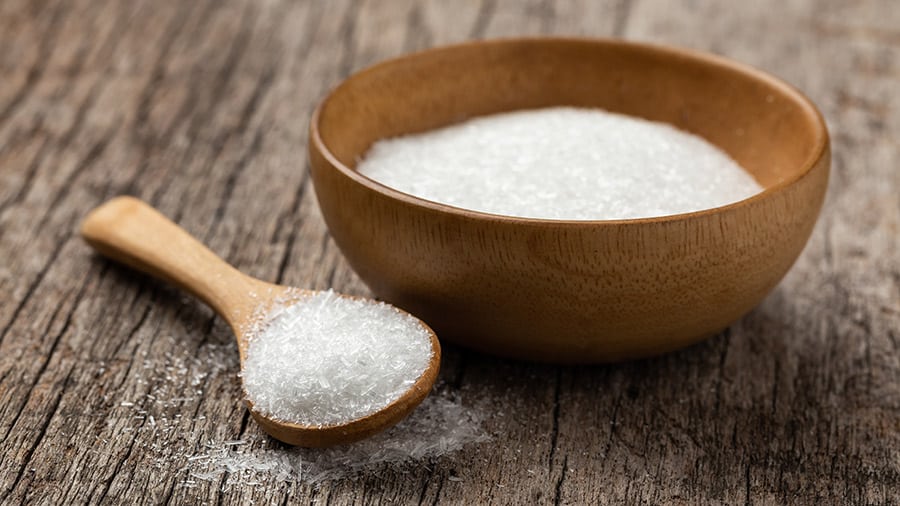MSG (monosodium glutamate) is an often misinterpreted substance worldwide. Part of the reason people are wary of it is that its name sounds too chemical-y. On the other hand, some people still choose to use MSG to make their dishes taste a lot better.
Pure MSG tastes like a bit of salt with no distinctive flavor when you eat it on its own. However, when you add MSG to food, it develops an “umami flavor” (the fifth taste) which imparts a meaty and delectable flavor.
To get a better understanding of MSG and its taste, read on.
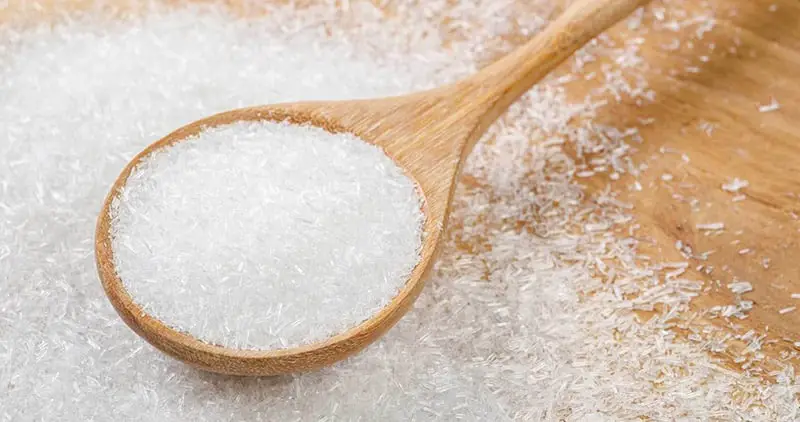
What Is MSG?
MSG or monosodium glutamate is a flavor enhancer often used in canned foods, soups, deli meats, restaurant dishes, and other foods. While it can’t be used for preserving food, it is a safe food additive recognized by the US Food and Drug Administration (FDA).
However, its application is still up for discussion. As a result, the FDA requires MSG to be mentioned on food labels when used.
MSG is the organic form of umami used as a spice and flavor enhancer. It may be used as a partial salt substitute since it has just one-third the sodium of regular salt and is considered safe.
Monosodium glutamate was formerly only linked with Asian cuisines, but it is now used all over the globe to enhance the taste of meals.
Common Foods That Contain MSG
Monosodium glutamate is typically found in many foods such as:
It’s characterized by headaches, rashes, itching, and stomach discomfort.
Fast Food
Fast food, especially Chinese food, is one of the most well-known glutamate-rich foods. MSG symptom complex is a disorder that some individuals suffer quickly after eating MSG-laden Chinese cuisine.
Although many Chinese fast-food restaurants have eliminated MSG from their menus, some still use it in various popular dishes, including fried rice.
Restaurants like Kentucky Fried Chicken also utilize MSG in their dishes.
Frozen Foods
Although frozen meals might be a quick and inexpensive method to feed your stomach, they often include several undesirable and sometimes harmful substances, including MSG.

Many frozen manufacturers use MSG in their products to enhance the delicious taste. Frozen pizzas, mac and cheese, and frozen breakfast dishes are among the many frozen food items that contain MSG.
Snack Foods and Chips
To enhance the delicious taste of chips, several producers utilize MSG. It includes consumer favorites like french fries, Doritos and Pringles.
MSG may be present in many foods other than potato chips, corn chips, and snack mixes, so it is advisable to check the label if you want to avoid ingesting this chemical.
Blended Seasonings
Seasoning mixes give stews and stir-fry a salty, savory flavor. MSG is used in many spice mixes to enhance and increase umami flavor without adding additional salt.
Many low sodium flavoring items include MSG, such as spice mixes and bouillon cubes. MSG is also used in various meat, poultry, fish rubs, and other seasonings to improve the dish’s taste.
Condiments
MSG is often in sauces, salad dressings, ketchup, barbecue sauce, etc.
Aside from MSG, many condiments have harmful chemicals such as artificial colorings and preservatives, so it’s preferable to choose goods manufactured with minimal, whole-food components wherever feasible.
Soups
MSG is often added to canned soups and soup mixes to enhance the delicious taste that customers want.
Campbell’s chicken noodle soup is perhaps the most popular soup that includes this addition.
Many additional soup items, such as canned soups, dry soup mixes, and bouillon seasonings, may include MSG; therefore, it’s crucial to read product labels carefully.
Processed Meats
MSG is in processed meats such as lunch meats, beef jerky, hot dogs, sausages, pepperoni, and meat snack sticks.
It is added to processed foods to lower salt levels without changing the flavor.
Substituting sodium with MSG improved the product’s salty flavor and acceptance without compromising taste in one trial.
Instant Noodles
Instant noodles are a budget-friendly dish that is popular among college students all around the globe.
On the other hand, many producers utilize MSG to enhance the delicious taste of packaged foods.
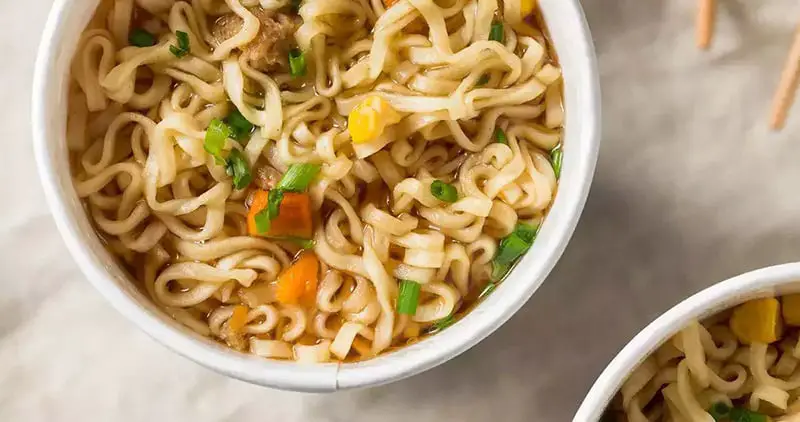
Quick noodles are often prepared with harmful components and are high in added salt, processed carbohydrates, and preservatives, all of which are harmful to your health.
In a study, consumption of instant noodles links to increased heart disease risk factors such as blood sugar, cholesterol, and blood pressure levels.
What Does MSG Taste Like?
If you’ve ever eaten anything that tasted salty, it most likely contains monosodium glutamate. It is impossible to explain since it is so subtle.
You are already acquainted with the umami flavor if you have ever tasted nori (seaweed) or soy sauce since both are frequent glutamate-containing components in Asian dishes.
If not, consider the words “savory,” “meaty,” or “earthy” to describe glutamate-rich meals like MSG.
Along with sweet, salty, sour, and bitter, umami is the ‘fifth taste.’
On Its Own
Pure MSG does not taste nice on its own. It tastes like a bit of salt with no distinctive taste when you eat MSG straight to your tongue.
When Added to Food
When you add MSG to food, it does not have the same unique flavor as salt.
It makes meals taste better by activating taste receptors in your taste buds. A range of canned products and fast meals use it as a flavor enhancer.
Umami (the fifth taste) is a flavor that tastes like glutamate, an amino acid (a building block of protein).
When added to foods, it imparts a meaty and delectable flavor. In other words, if you sample the umami flavor on its own, it tastes like glutamate.
When added to foods, however, it develops a fifth flavor that is distinct.
The term “umami” describes MSG’s flavor. Kikunae Ikeda, according to Ajinomoto, wanted to coin a new name to describe the taste of his new powdered glutamate innovation.
The term “umami” comes from the Japanese word “umai,” which means “delicious.”
Indeed, all foods Americans associate with umami taste are abundant in natural glutamates.
On the other hand, too much MSG in a dish will taste odd.
Is MSG Bad For You?
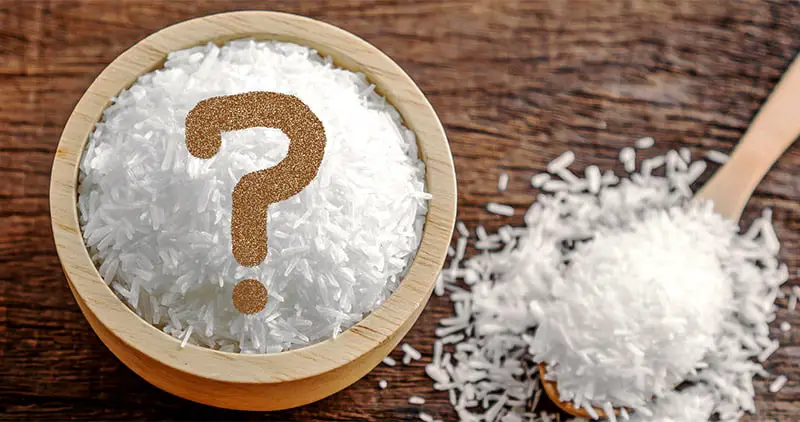
For many years, monosodium glutamate has been famous as a food additive.
The FDA has received several reports of alarming responses that link to too many MSG-containing foods.
The MSG symptom complex includes the following reactions:
- Headache
- Flushing
- Sweating
- Face stiffness or pressure
- Numbness, tingling, or burning in the face, neck, and other parts of the body
- Fluttering, quick heartbeats
- Chest discomfort
- Feeling unwell (nausea)
- Weakness
However, there is no conclusive evidence linking consuming MSG to these symptoms.
Although, researchers acknowledge that MSG may cause short-term responses in a small percentage of persons.
Symptoms are often minimal and may not need treatment. The only method to avoid a response is to avoid MSG foods.
You might also be interested in exploring food astringents if you’re looking to diversify your culinary experiences. One alternative to consider is alum powder.
MSG Alternatives
Even though MSG is FDA-allowed, many people choose to avoid it for various health reasons; others may have difficulties locating it in their local supermarket.
Here are a few of some MSG alternatives:
- Soy Sauce
You may easily replace MSG with soy sauce. It is an umami-rich sauce that goes well with stir-fries, casseroles, and soups.
Soy sauce enhances a savory, salty taste to meals and is widely available in grocery stores everywhere.
- Beef Stock
Make your beef stock by gently boiling beef bones and aromatics in a stockpot.
Homemade stock is a beautiful way to boost the umami taste of dishes.
The meaty taste is very similar to MSG because they have high glutamate levels, an amino acid naturally present in animal protein.
- Dulse
Dulse is a kind of seaweed having a somewhat salty, savory flavor and a faint ocean flavor.
It is a dry product that may be rehydrated and used in most Asian meals, including MSG. The addition of dulse to a flavorful broth like dashi will enhance the rich, meaty qualities.
- Parmesan Cheese
Parmesan is an Italian cheese that contains a lot of natural MSG due to the fermenting process. Pasta, pizza, risotto, and many other Italian foods benefit from their savory taste.
On the other hand, aged parmesan cheese isn’t widely used in Asian cuisine and would be out of place in a stir fry.
- Shiitake Mushrooms
Shiitake mushrooms have one of the highest glutamate levels of any vegetable.
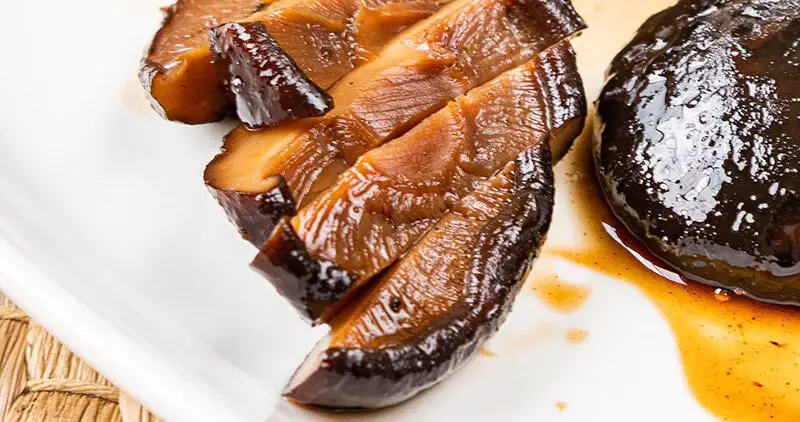
To accentuate the taste of the ‘rooms’, caramelize them in a skillet before roasting them in the oven, then add them to your favorite noodle recipes.
If you want to avoid frying the mushrooms and toss the seasoning in, mushroom seasoning is a more straightforward option.
- Anchovies
Anchovies are glutamate-rich fish, and they’re delicious in a variety of prepared meals.
Adding it to sauces, spaghetti, or other saucy Italian foods adds a salty umami flavor to your taste buds.
If you don’t like fishy tastes, don’t worry; after cooking, the fish flavor is gone.
- Yeast Extract
Yeast extract is a common food additive to bread. Like home brewing providers, specialty retailers sell this component in powder form.
Because they contain glutamic acid, a scoop of this tar-like material will enhance the flavor of savory foods. Just remember to use it responsibly.
- Salt
Seasoning salt may not seem like a very inventive MSG substitute, but it is a highly efficient taste enhancer.
For optimal results, use diamond crystal kosher salt or table salt. Less expensive sodium salt is OK to use early in a recipe, but not at serving time.

